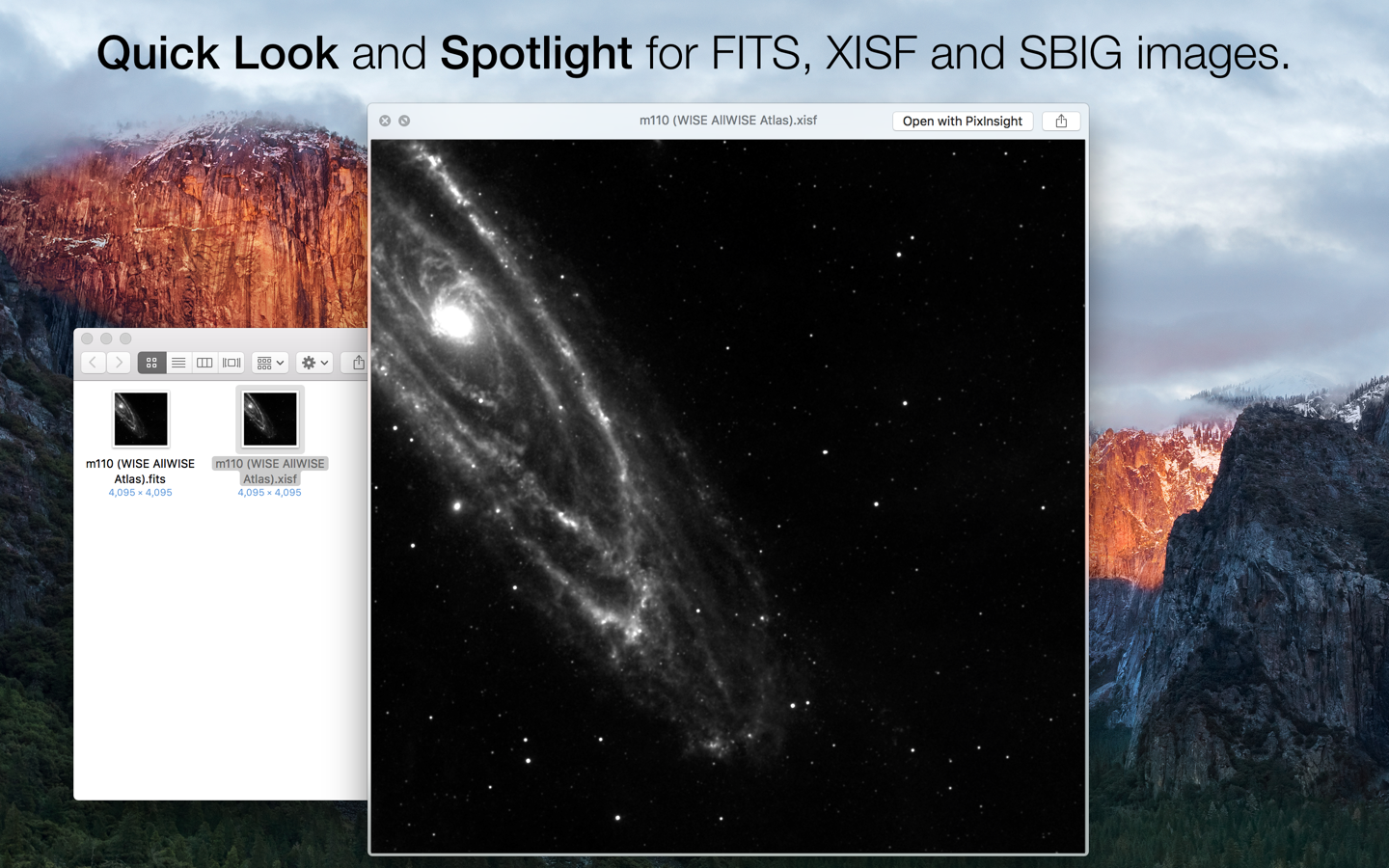I’d like to take a little time to pause and reflect on the past year’s accomplishments, and to try to peer ahead at what I expect we will be delivering over the coming year. The future is never certain, of course, but I think it’s important to talk about where we are now and where we think we’re headed.

We shipped Observatory 1.0 a little over 8 months ago on April 25. Since then we have released five updates. These updates packed bug fixes, but also many new features. We added results filtering and six more image archives to Virtual Observatory, Spotlight importers for FITS, XISF and SBIG files, a Quick Look generator for XISF files, and enhanced the drag & drop handling. For macOS Sierra we added support for its Tabs feature. We even introduced limited GPU accelerated computing to Observatory.
Observatory was featured in the November 2016 Sky & Telescope New Product Showcase. It was great to see the innovative approach to discovering, organizing and processing astronomical images being recognized in the 75th Anniversary Issue of Sky & Telescope.
Not everything did go according to plan though. With macOS Sierra, Apple introduced various regressions, including some that affected Observatory’s image browser. These regressions pushed a planned rework of the image browser to the top of our release plan. In fact, we decided to rewrite it completely, and have it ready just in time for the public release of macOS Sierra.
We are glad that we made this decision, as the new image browser and the focus bar are great improvements to Observatory. The downside was that optimizations and documentation were delayed.
The greatly enhanced documentation finally did arrive with the release of 1.0.5 on November 12, after which we were able to shift our focus to optimizations.
Looking ahead at 2017
2017 has barely begun, but I’m very pleased to share that we have some major stacking and calibration performance improvements on the way!
Optimization of these and other features of Observatory is going to be a top priority this year. Users with a dual GPU setup will be glad to hear that the ability to do the number crunching on the GPU will also be greatly enhanced. In addition to these real performance enhancements, the perceived performance will also get attention, in the form of making Observatory more responsive while the numbers are being crunched.
Observatory is going to gain several additional features, like the ability to open image documents in their own window, and we’ll be continuing to improve the overall user experience.
Beyond all that, well, I’m sure Apple has more surprises coming at us this year. We’ll try to be as responsive to them this year as we have been to the surprises last year.
Please keep in mind that this is a snapshot of our current direction, not a commitment to arriving anywhere on a particular schedule. Reliably predicting the future in that way is impossible — but I’m always happy to share which way we’re headed!

